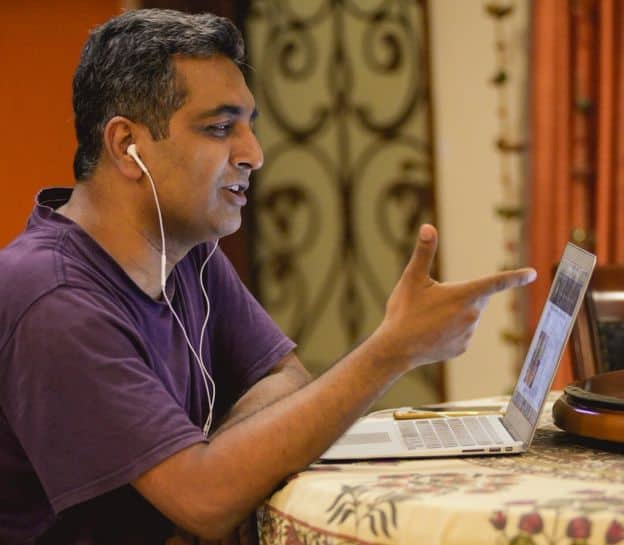Spoken by more than 35 million people, Pashto is an official language in Afghanistan and Pakistan.
Whether you’re drawn to the rich Pashtun history, unique and beautiful script, or you simply want to explore the extensive literature, Pashto is definitely worth exploring.
Learn the Pashto language with our curated list of tried and tested Pashto resources from the best apps, courses, and games, to other media we’ve got them covered just for you.
In this post, we highlight some resources that are worth checking out. Whether you’re a beginner, intermediate, or advanced learner, there’s definitely a resource that will suit your learning needs. Let’s get started.
Table of Contents
Resources for Learning Pashto Language Online
Setting out to learn Pashto might remind you a bit of Robert Frost’s poetry: It is a road “less traveled by.”

In the magical world of internet interconnectivity, there are nearly unlimited resources for English speakers learning languages such as Spanish, French, Italian, Arabic, Mandarin, and German. By contrast, resources for English speakers learning Pashto seem scant.
Best Apps to Learn Pashto and Pashto Language Courses
Despite a fairly large number of speakers — in the neighborhood of 50 million worldwide — the internet is not teeming with Pashto courses.
Well-known language platforms like Duolingo, Glossika, Rosetta Stone, and Busuu are not yet offering Pashto.
Mango Languages
The scope of the Pashto curriculum on Mango Languages is limited. There’s only one unit for Pashto, called “Basics.” (Compare that to Mango Language’s Latin American Spanish course, which has five main units, plus six specialty units.)
Still, Mango Languages can be a good pick for absolute beginners. The Perso-Arabic script is very clear and easy to read in Mango Languages, which is a bonus for beginning learners. Even after repeating just a few words in the opening dialogue, I felt as though I could pick out the letters for certain sounds, such as the characters corresponding to “m” and “l.”
Mango Languages’ Pashto lessons include cultural notes about Pashtunwali, the ancient code of honorable conduct in the Pashtun culture. These pieces of advice may serve you in good stead, should you choose to speak Pashto with natives — especially in one of its native countries. For example, you’ll know not to offer your hand for a handshake if you’re greeting someone of the opposite sex.
Memrise
An app like Memrise takes a different approach to language learning than some other learning methods. Its offerings are called “courses,” but it does not teach its curriculum in the more traditional manner favored by resources like Mango Languages.

Rather than presenting lessons with grammar and cultural notes, and explaining new concepts and vocabulary step-by-step, Memrise is more like a gamified set of quizzes. Memrise’s spaced repetition system gives you repeated word exposure, which can be a great tool for reinforcing your retention of Pashto words. You’ll show your recognition and recall of Pashto words in different ways through Memrise, doing multiple-choice and fill-in-the-blank exercises.
There are numerous Memrise Pashto courses for English speakers. The community-created study decks can give you a wide variety of choices. However, since anyone can freely contribute a course through the Memrise platform, the course designs, included features, and quality standards may vary. Some courses lack audio; others use phonetic versions of words, rather than the Pashto alphabet, to write vocabulary.
You can try a few different courses to see which ones best suit your needs, without spending anything but a little time. All course materials are accessible with a free Memrise membership, and some premium features — like “Learn with Locals” (video of native speakers) or “Grammarbot” — aren’t yet available for several of the Pashto courses.
Pimsleur
This well-known program can be particularly good for boosting oral language learning. Currently, Pimsleur offers a monthly Pashto plan with a free trial.
Pimsleur’s Pashto courses, which teach the Afghani standard of the Northern dialect, are also available as MP3 or CD packages. Each level contains thirty lessons; if you’re between levels, you can go à la carte and buy just five lessons at a time. Pimsleur has recently added interactive exercises and reading lessons to its strong oral language foundations, as well as some interesting options like Driving Mode, household lesson sharing, and integration with Amazon Echo.
Instant Immersion
Instant Immersion does not rank highly as compared to more modern resources. That said, it could be a low-budget alternative to Pimsleur for beginning Pashto learners who want to focus on listening and speaking. There are also some games and exercises included in this downloadable software, as well as virtual flashcards and pronunciation practice.
Instant Immersion teaches Pashto as it’s spoken in Afghanistan. The program, while topically organized, doesn’t offer the type of curriculum that will give you a strong foundation in the grammar or syntax of the language. In addition, it does not appear to have a linked mobile app.
ILoveLanguages
At first glance, the Pashto lessons on ILoveLanguages.org may look much like those found on MyLanguages.org and Learn101.org: All three sites use a similar organizational interface, with left-hand sidebars and simple tables for navigation. Lessons on all three sites consist largely of Pashto word lists with English translations. (The ILoveLanguages’ site is a bit more colorful, with a cleaner, more striking aesthetic.)
However, ILoveLanguages offers something more, and it’s an important difference: For almost every word or phrase, there’s matching audio, recorded by a native speaker. While the other sites may provide some audio — MyLanguages.org, for example, has downloadable MP3s for the Afghani or Pakistani versions of their Pashto Audio Lessons — it’s unclear how these correspond to the written lessons on the site.

ILoveLanguages has nicely integrated the audio clips into the vocabulary and grammar tables of the lessons, so it’s very clear which clips match which words and phrases — all you have to do is click on the green “speaker” icon on the same line of the table with the vocab you’re studying.
The site lacks a lot of features, such as interactive exercises or a way to practice speaking. It can, however, help you with pronunciation and learning a lot of basic, useful words and phrases.
More Pashto Learning Apps
There are a few Pashto learning apps for Android and iOS that don’t have corresponding web-based courses. They generally teach basic words, phrases, pronunciation, and a bit of grammar through the convenience of your mobile device.
Bluebird Languages is a language-learning app that boasts phrasebook-style lessons for over 160 languages, including Pashto. The Pashto curriculum only includes Core Vocabulary (by category) and Powerful Phrases. There appear to be no Daily Lessons, Creating Sentences, Conversations, or Essential Verbs units, as there are for other languages on the app. If you’re using the app on a free plan, the Powerful Phrases unit is locked.
Nonetheless, you can still learn some basic Pashto vocabulary with Bluebird Languages. There are images to illustrate words, which may appeal to visual learners. There’s also native-speaker audio to help you learn the proper pronunciations, in an approach that’s reminiscent of both Pimsleur and Mango Languages. While much of the lessons consist of learning phrases, some of the phrases you’ll memorize could be useful for tourists and travelers.
One minor learning impediment may be that the Pashto text is fairly tiny on a mobile device. Since there is currently no web version of Bluebird languages, you may have difficulty learning the spelling of the Pashto words if you’re still familiarizing yourself with the Perso-Arabic script.

Qvyshift LLC offers Learn Pashto: Pashto (Pak.) Basic Phrases for Android users, but it hasn’t been released for iOS yet. With a simple, white-on-black interface to teach Pashto as it’s spoken in Pakistan, the app focuses on military phrases. For those still learning the Pashto alphabet, phonetic versions of the words in the Latin alphabet are included, as well as audio to help with pronunciation. The emphasis seems to be more on speaking than reading, since the Perso-Arabic script is only about half the size of the English translations.
The Qvyshift app may not be the best pick for visual learners, since its rather plain presentation lacks images to represent any of the words.
A more colorful choice for Android users would be Learn Pashto by Maihan Nijat (Sunzala Technology). With words organized by categories, this app includes simple illustrations, audio, grammar, and quizzes to test your Pashto progress. It even breaks down the Pashto alphabet into its contextual forms, helping you to learn how letters look in different positions (initial, medial, and final).
There seem to be fewer Pashto learning apps for iOS users than for Android users, although there are numerous Pashto dictionary apps for the iPhone or iPad.
Learn Pashto by Cyber Designz claims that you can “learn Pashto in 7 days” with their iOS app. Not all users seem to agree. The featured content:
- Vocabulary
- Grammar
- Phrases
- Basic conversation
- Numbers
- Alphabets
- Offline audio dictionary
Like many Pashto-learning apps, Cyber Designz’ efforts offer a phonetic version of Pashto words and phrases, written out in the Latin alphabet.
Those with Apple devices can take their Pashto learning on the road with Learn Pashto via Videos by GoLearningBus. This app organizes words and phrases into different “buses” for different levels, such as a “school bus” for beginners, and a “college bus” for more advanced students. It includes a visual dictionary, audio for pronunciation, flashcards, and quizzes.
One feature that particularly stands out in the GoLearningBus app is the writing practice, which helps you to learn to write Pashto by tracing individual letters with your finger or stylus. User reviews of this app were mixed, though, and much of the content is only accessible after you purchase the app. Another caveat is that the app does not appear to have been updated since 2016, and may not be compatible with your device.
Other Apps to Learn Pashto
The following apps do offer some Pashto curriculum. However, we did not feel that the quality of these programs was likely to make them good learning resources:
Language Exchange Apps
When you’re learning to speak another language, there’s really no substitute for a conversation partner.
Depending on where you live, though, it may not be easy to find people who speak the language you’re studying. This can be especially true for a language like Pashto, which doesn’t have a plethora of learning resources in the English-speaking world.
We’ve reviewed language exchange apps like Tandem, HelloTalk, and Speaky, all of which can help you find Pashto conversation partners online. The Tandem experience is particularly personalized; when you sign up, you’ll be asked about your favorite topics, your ideal language partner, and your learning goals. Similarly, Speaky will ask you to pick your personal interests from a list, with the goal of finding compatible conversation partners.
My Language Exchange doesn’t have a fancy interface — but it has plenty of Pashto speakers looking for conversation partners, so it’s worth checking out.
Since Pashto in Pakistan is spoken somewhat differently than the standard used in Afghanistan, you may wish to scan for speakers based in areas where your desired dialect is spoken.

Language Tutor Marketplaces
For more structured, one-on-one instruction, try a tutor. We’ve reviewed both italki and Verbling, two online marketplaces for finding language tutors.
You can find Pashto tutors on either site. Verbling makes it especially easy to find a tutor who speaks the variety of Pashto you’re studying; just look for the globe icon with each teacher’s profile to see where they’re from. On italki, you’ll see a small flag icon overlapping each tutor’s avatar. The flag indicates the tutor’s country of origin.
Verbling offers a free trial lesson; a tutor trial on italki is usually presented at a discounted rate.
Pashto Language Exercises, Games, and Flashcards
Here are a few interactive learning tools that will help you practice Pashto without pressure. They might even entertain and relax you, allowing your brain to absorb more.
Language Exercises and Games
Unfortunately, the Internet is not rife with Pashto language exercises. Even standby Clozemaster, which we’ve found to be a reliable source of intermediate vocab exercises, does not yet count Pashto among its dozens of languages.
One of the few sites to offer Pashto language games is Digital Dialects. These cover basics such as colors, days and months, fruits and vegetables, and numbers. The design is a bit ‘90s retro, but the games in this internet nostalgia trip are still useful for learning fundamentals.
Pashto Joke Collections
Jokes are an entertaining way to learn Pashto vocabulary and get more experience with sentence structure. They have the added benefit of showing you what Pashtun culture finds funny, which can give you insights into the mindsets of some Pashto speakers.
Pashto Jokes by Maihan Nijat is like a book in app form. It’s available for both iOS and Android, and would be a good choice for intermediate learners.
Want to tickle your funny bone some more? Try the Pashto Jokes پښتو ټوکې app, from developer Khoshal Saidy, on your Android device.
Flashcard Apps
Both Anki and Brainscape have a small handful of Pashto flashcard desks. Brainscape’s interface has many features in common with Anki, but with sleeker aesthetics. Anki is extremely customizable, but has a more utilitarian interface and a steeper learning curve for new users.

These flashcards can be helpful for learners trying to memorize written Pashto. However, none of the Pashto decks for either app seem to have any audio. If you need any help pronouncing these words, you might consider using Forvo, which currently has audio files for over 1,500 Pashto words.
The good news is that both applications give you the tools to make your own multimedia flashcards. So, if you’re willing to put in the time and effort, you can create your own Pashto flashcard decks with audio clips and images. Sources like the aforementioned Forvo can supply native audio. Use your imagination and a royalty-free image site like Pixabay or Pexels to find pictures to go with your new words.
To put your flashcard vocabulary into context, you can try a site like Tatoeba, which has crowd-sourced sentences that are then translated into multiple languages. Currently, the site brings you a few dozen sentences in Pashto.
Pashto Podcasts
Podcasts in Pashto give intermediate and advanced learners the opportunity to focus on listening comprehension. They deal with many topics and come from a variety of sources.
SBS Australia streams an extensive and frequently updated Pashto podcast series. It includes news from both Afghanistan and Pakistan.
Both BBC Pashto and Voice of America Pashto have archived some older podcasts on Soundcloud. While these no longer provide current news, they might still be good practice for intermediate or advanced learners, who might already have some knowledge of the events discussed.
On Spotify, the Islam Pukhto k podcast explores Islam.

Faisal Khan and Shafeeq Gigyani produced a limited, eleven-episode podcast series: Pashto Podcast on Education & Economy.
YouTube for Pashto Learners
YouTube is one of the richest sources of Pashto learning materials for English speakers. Videos tend to be a dynamic learning modality. They can appeal particularly to both auditory and visual learners. Most of the Pashto-learning videos on YouTube are intended for beginner and intermediate learners.
Intermediate and advanced learners, though, have a lot of Pashto music and other content to explore.
Alliance Bay Realty hosts an older YouTube channel for the now-defunct American Pashto Academy. It features a tremendous number of videos for beginning Pashto learners to acquire the Pashto alphabet, basic vocabulary, and grammar. Most of the Pashto is paired with an English translation, as well as a phonetic (Romanized) version of the Pashto words.
The series also includes cultural notes, a group of videos to help you read newspapers in Afghani-standard Pashto, and even a playlist of Pashto music videos. The singers in these videos are largely accompanied by acoustic and traditional instruments. (Unfortunately, several of these are marked “deleted” or “private” at this time, probably due to copyright issues.)

MilitaryLinguist presents about a dozen no-nonsense lessons for learning Pashto. Pashto words are presented in both romanized phonetic versions and Perso-Arabic script. The phonetic versions of the words use acute accent marks to show word stress, and the Perso-Arabic script has been annotated with diacritics to indicate the short vowels. There’s also an English translation for each word. The audio is only in Pashto.
A newer channel with fairly frequent updates, English to Pashto Learning eschews the phonetic representations of Pashto words, and only displays them in the Pashto alphabet. Presenter Kashif Momand includes English translations, although there are noticeable errors in some of the English used.
Since much of the commentary in the videos is in Pashto, rather than English, this might be a better channel for intermediate learners — absolute beginners would probably be very quickly lost.
The channel has particularly rich content for learning grammar, with a special focus on verb tenses and modal verbs (such as should, will, and might.)
For intermediate and advanced learners, PB (“Pashto Beats”) Studio Music, based in Pakistan, has a wealth of Pashto songs — many from Pakistan, with a few from Afghanistan. They also post about one high-def, full-length Pashto film each year, such as Ilzaam (2017) and Gandageer (2018).
LemarTV is a particularly good find, in that it’s one of the few exclusively Pashto broadcast channels, based in Afghanistan. It may be best to enjoy the content through YouTube. (If you’re using the Chrome web browser, the station’s website will automatically push out an Adobe FlashPlayer install, which you might want to avoid. This appears not to be an issue in the Microsoft Edge or Firefox browsers, however.)

1TVNewsAF, from Afghanistan, has literally hundreds of videos from news broadcasts and the station’s morning magazine. There are political programs, news reports, sports coverage, and debates. Much of the content is in Pashto, but there is also some in Dari. The channel has an app for both Android and iOS, so you can watch videos whenever you have a few spare moments.
The Nabil Miskinyar channel hosts an archive of Afghani Pashto programming, mostly news. At least some of these videos originate from California-based Ariana Afghanistan television.

